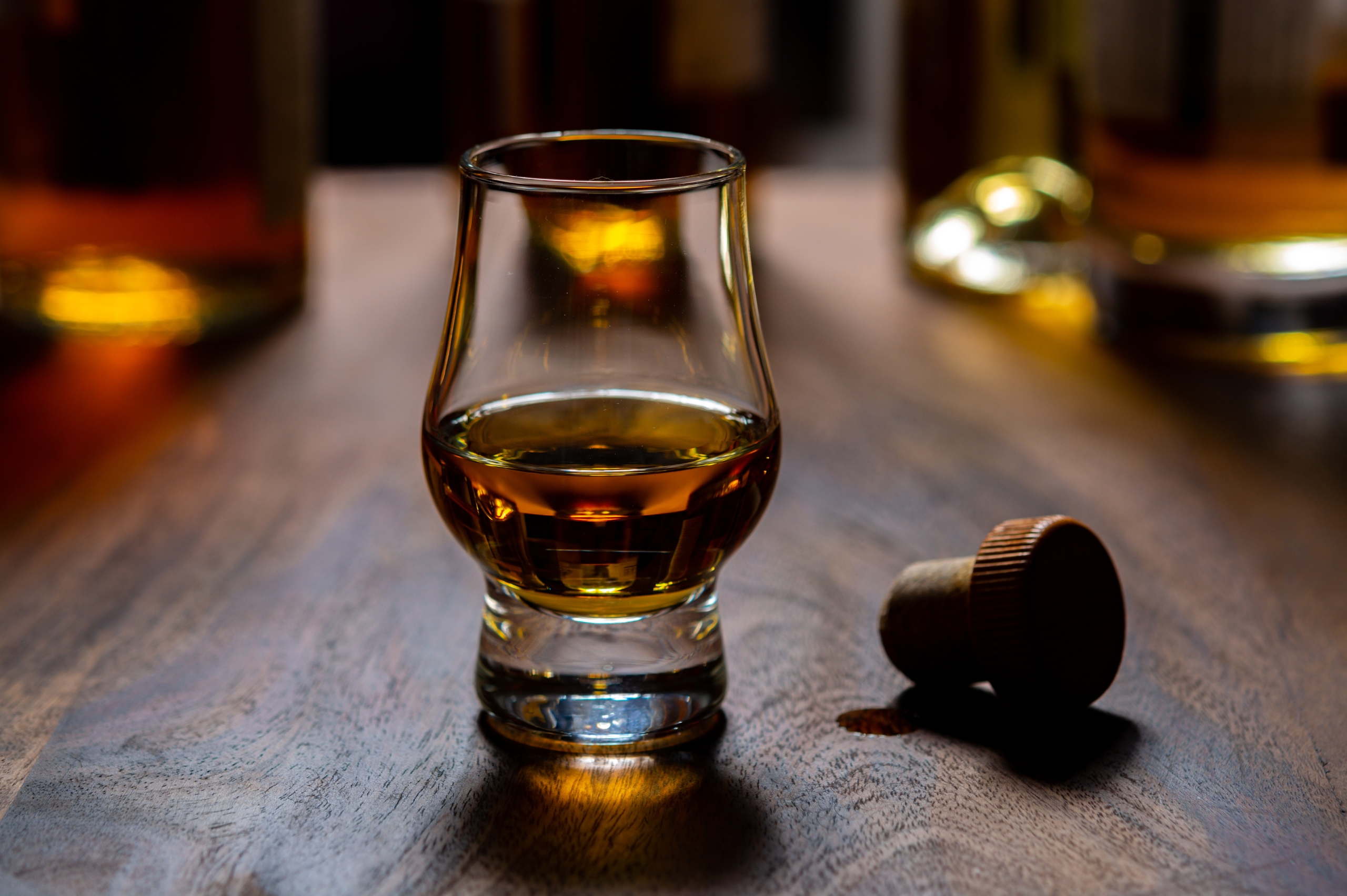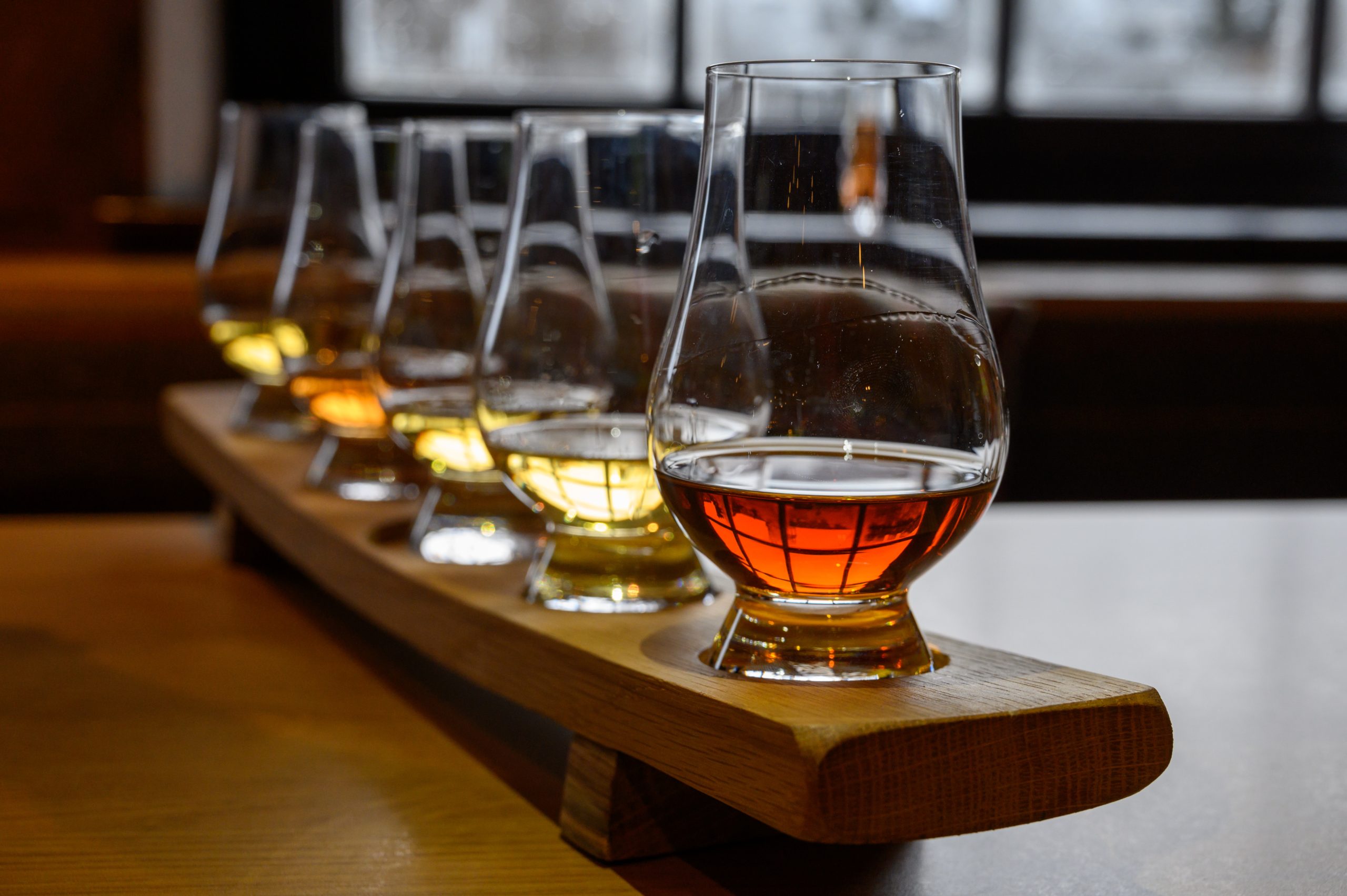Fermentation
The wort is cooled and passed to a huge tank called a washback. These can be metal, usually stainless steel, or wood. Yeast is added and begins to feed on the sugar – this produces alcohol and carbon dioxide. Liquid yeast is commonly used, which speeds up the initial time for this process to begin.
Fermentation is the first part of the process that can have a real and influential effect on the final spirit. The yeast’s job is done after 48 hours with all sugar turned to alcohol. Many distilleries take the liquid at this point, which is now called wash, to distil. However, many more leave the wash for longer – this creates extra depth, complexity and fruity notes as the yeast cells die and fall to the bottom of the washback. The wash is 7-8% ABV and reminiscent of a Weissbier.
Distillation
In Scotland, the wash is traditionally distilled twice. Each time a spirit is distilled it becomes more pure and higher in alcohol strength. Single malt is made in batches and through copper pot stills. These have a bowl-shaped pot at the base, a neck and a lyne arm coming off the top of the neck that is connected to a condenser. Copper is great at purifying alcohol vapours.
Like with fermentation, the stills are a key point where a distiller can control and influence the flavour and character of their spirit. The shape and size of stills are a major factor in this – simply put, tall stills make light and delicate spirit while shorter stills produce heavy and oily spirit. Across Scotland there are stills of all shapes and sizes, which provides huge diversity.
First distillation takes place in the wash still. This is normally the larger of the two still types. The wash is pumped into the pot and heated. Alcohols begin to evaporate at a lower temperature than water (around 65-70°C) and vapours rise up the neck and down the lyne arm. Once they hit the condenser, which is a series of copper tubes surrounded by cold running water, the vapours return to liquid form. This is now called low wines and has an alcoholic strength of approximately 25% ABV.
Some distilleries operate with a wormtub condenser system. This is a traditional apparatus that has largely been replaced with modern tube condensers. A wormtub is a large tank on the exterior of the distillery into which the lyne arms of the stills are connected. This is filled with cold water and the lyne arms coil sharply down through the water. This resembles a worm, hence the name. Again, once the alcohol vapours hit the cold copper in the tank they condense back to a liquid.
Second distillation takes place in the spirit still. The low wines are heated in the pot and different alcohols rise at different stages. Foreshots come first – these are very high ABV, pungent and full of undesirable compounds. Next come the hearts. These are the alcohols that are collected as new make spirit and go to be matured in oak casks. They come off the still as a transparent liquid at approximately 65% ABV. Finally come the feints – these are weak, cloudy and contain undesirable compounds.





